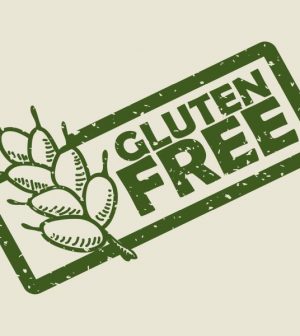- Navigating Your Midlife Crisis: Embracing New Possibilities
- City Raccoons Showing Signs of Domestication
- Mapping the Exposome: Science Broadens Focus to Environmental Disease Triggers
- One Week Less on Social Media Linked to Better Mental Health
- Your Brain Changes in Stages as You Age, Study Finds
- Some Suicide Victims Show No Typical Warning Signs, Study Finds
- ByHeart Formula Faces Lawsuits After Babies Sickened With Botulism
- Switch to Vegan Diet Could Cut Your Greenhouse Gas Emissions in Half
- Regular Bedtime Does Wonders for Blood Pressure
- Dining Alone Could Mean Worse Nutrition for Seniors
Who Really Needs to Go Gluten-Free

It seems like “gluten-free” labels are popping up everywhere, including on foods that never had any gluten to begin with. Is this a health bandwagon you should jump on … or shy away from?
Gluten is a protein found mostly in wheat, barley and rye. A gluten-free diet is a must for the 2 percent of the population diagnosed with celiac disease, to avoid serious intestinal inflammation.
Some people have a lesser condition called non-celiac gluten sensitivity and may feel better on a gluten-free diet.
What to avoid when you have celiac disease or gluten sensitivity:
- Wheat in all forms including durum flour, farina, graham flour, semolina and spelt.
- Barley and products with malt.
- Rye.
- Triticale.
But for everyone else, gluten-free may just be more costly and could negatively affect digestive health because you’re missing out on fiber. Consumer Reports also found that some gluten-free foods have more fat, sugar and/or salt than their regular counterparts, and are short on nutrients like iron and folic acid — found in foods with enriched-wheat flour.
Many products also replace wheat with rice. This is a concern because the U.S. Food and Drug Administration has been monitoring rice and rice products for the presence of small amounts of arsenic, which finds its way into rice from both natural and human sources. So, it’s important not to overload on this grain, even whole-grain brown rice.
If you must cut out gluten, get fiber from other whole grains like amaranth, kasha, millet and quinoa, and from fruits, vegetables and nuts. And always read labels to be sure you’re not replacing gluten with sugar and fat.
More information
Find out more about celiac disease, including whether you should get tested, on the Cleveland Clinic website.
Source: HealthDay
Copyright © 2025 HealthDay. All rights reserved.










